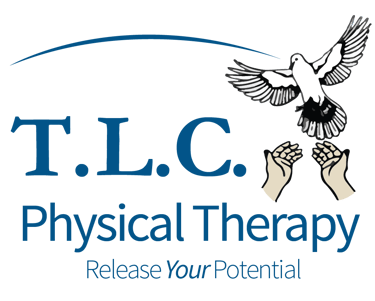Effective Stretching Techniques Before and After Workouts
The Importance of Stretching: Pre- and Post-Workout Techniques for Injury Prevention – Stretching is essential for improving flexibility, preventing injuries, and enhancing workout performance. This guide covers the benefits of dynamic and static stretching, key pre- and post-workout stretches, and expert-backed techniques to keep your muscles strong and limber. Plus, learn when physical therapy can help improve mobility and prevent long-term issues. Read now to optimize your fitness routine! 💪
Jason Lamendola PT
3/2/20253 min read


The Importance of Stretching: Pre- and Post-Workout Techniques for Injury Prevention
Stretching is a key component of any fitness routine, yet it is often overlooked. Whether you're preparing for an intense workout or winding down after exercise, stretching plays a crucial role in preventing injuries, improving flexibility, and enhancing overall performance.
In this guide, we explore the benefits of stretching and provide effective pre- and post-workout techniques to keep your muscles strong, limber, and injury-free.
Why Is Stretching Important?
Stretching offers numerous health benefits, including:
✔️ Increased Flexibility – Improves range of motion and reduces muscle stiffness.
✔️ Better Circulation – Enhances blood flow to muscles, aiding in recovery.
✔️ Reduced Injury Risk – Helps prevent muscle strains and joint pain.
✔️ Improved Posture – Supports muscle alignment and reduces tension.
✔️ Enhanced Athletic Performance – Prepares the body for physical activity and promotes efficiency in movement.
To maximize the benefits, it’s essential to incorporate both dynamic and static stretches into your fitness routine.
Dynamic Stretches vs. Static Stretches
Before diving into stretching techniques, it's important to understand the difference between dynamic and static stretches and when to use each.
Dynamic Stretches (Best for Pre-Workout)
Dynamic stretches involve controlled, repetitive movements that prepare the muscles for activity. These stretches mimic the motions of your workout and help warm up the body.
Benefits of Dynamic Stretching:
✔️ Reduces muscle stiffness
✔️ Increases muscle warmth
✔️ Boosts blood flow
✔️ Increases heart rate
✔️ Improves agility, pace, and acceleration
Static Stretches (Best for Post-Workout)
Static stretches involve holding a stretch for an extended period (15–45 seconds) to elongate the muscles. These stretches are ideal for post-workout recovery.
Benefits of Static Stretching:
✔️ Improves flexibility
✔️ Enhances performance
✔️ Increases range of motion
✔️ Reduces muscle tension
Pre-Workout Stretches to Prepare Your Muscles
Before engaging in physical activity, it's essential to perform dynamic stretches to activate your muscles and increase blood flow.
1. Arm Circles (Warms up the shoulders, arms, and back)
How to Perform:
1️⃣ Stand upright with feet shoulder-width apart and arms extended to the sides.
2️⃣ Make small forward circles with your arms, gradually increasing the size.
3️⃣ Complete 20 circles, then reverse the direction.
2. Squat Stretches (Improves lower body flexibility and range of motion)
How to Perform:
1️⃣ Bend forward and touch your toes.
2️⃣ Lower into a squat while holding your toes.
3️⃣ Rise up slightly, keeping your legs almost straight.
4️⃣ Return to standing and repeat five times.
3. Spinal Twists (Stretches the spine and relieves back tension)
How to Perform:
1️⃣ Stand upright with arms extended forward.
2️⃣ Gently rotate your torso from side to side.
3️⃣ Repeat the motion 10 times.
Post-Workout Stretches for Recovery
After a workout, it's important to perform static stretches to relax the muscles and promote recovery.
1. Quadriceps Stretch (Eases soreness and enhances quad flexibility)
How to Perform:
1️⃣ Stand upright and grab your right ankle with your right hand.
2️⃣ Gently pull your ankle toward your glutes.
3️⃣ Keep your knee aligned with your hip—avoid tilting inward or outward.
4️⃣ Hold for 30 seconds, then switch legs.
2. Butterfly Stretch (Opens up the hips and improves flexibility)
How to Perform:
1️⃣ Sit on the ground with the soles of your feet together.
2️⃣ Keep your spine elongated and press your hips toward the floor.
3️⃣ Hold for 60 seconds, rest, and repeat three times.
3. Hamstring Stretch (Boosts balance and increases stamina)
How to Perform:
1️⃣ Stand upright and place one leg on a low stool or step.
2️⃣ Gently bend forward at the hips while keeping your back flat.
3️⃣ Flex your raised foot to feel the stretch in the hamstring.
4️⃣ Hold for 30 seconds, then switch legs.
For additional stretching recommendations, visit the Mayo Clinic’s stretching guide.
Enhance Your Mobility with Professional Physical Therapy
Stretching is an effective way to prevent injuries and improve mobility, but if you're experiencing chronic stiffness, muscle pain, or limited range of motion, physical therapy can help.
If you want to improve flexibility, prevent injuries, and enhance workout performance, incorporating proper stretching techniques into your routine is essential. A licensed physical therapist can help develop a customized plan tailored to your specific needs, ensuring you stretch safely and effectively. By following the strategies outlined in this article, you can increase mobility, reduce muscle stiffness, and improve overall physical stability. If you're looking for expert guidance on optimizing your movement and preventing injuries, visit one of TLC Physical Therapy’s convenient locations. Our dedicated team provides personalized care and comprehensive treatment plans designed to support your fitness and recovery goals.
